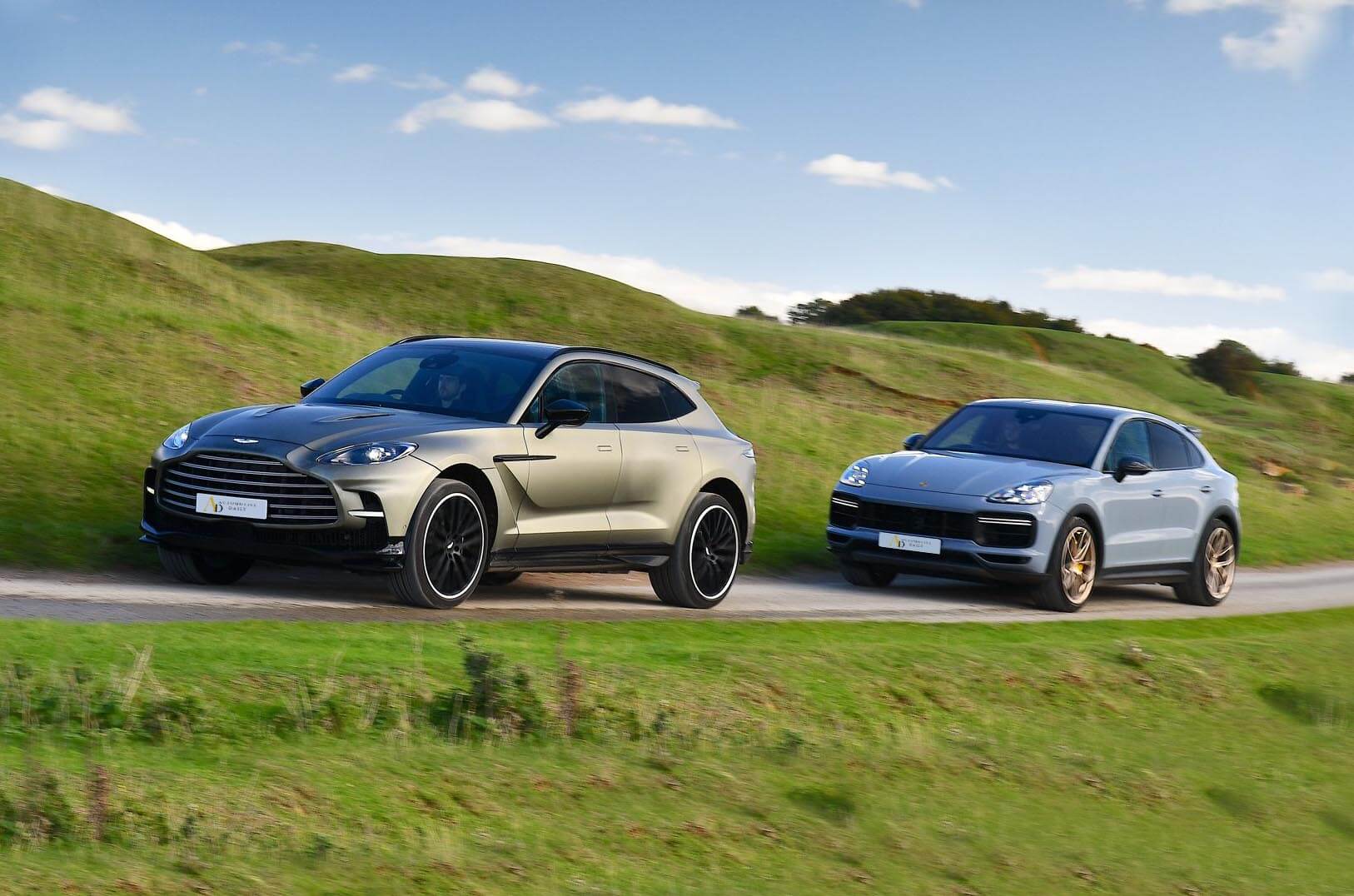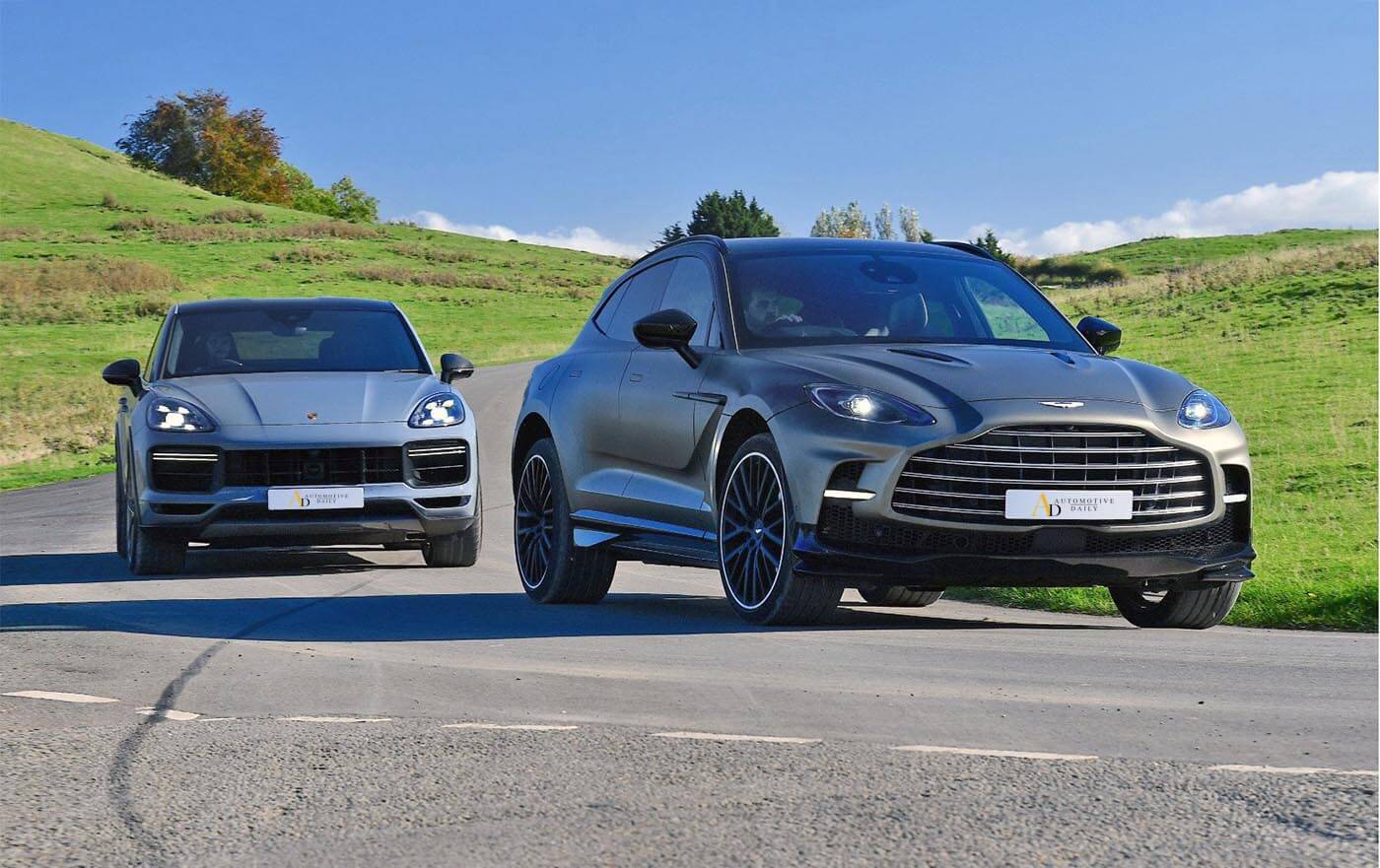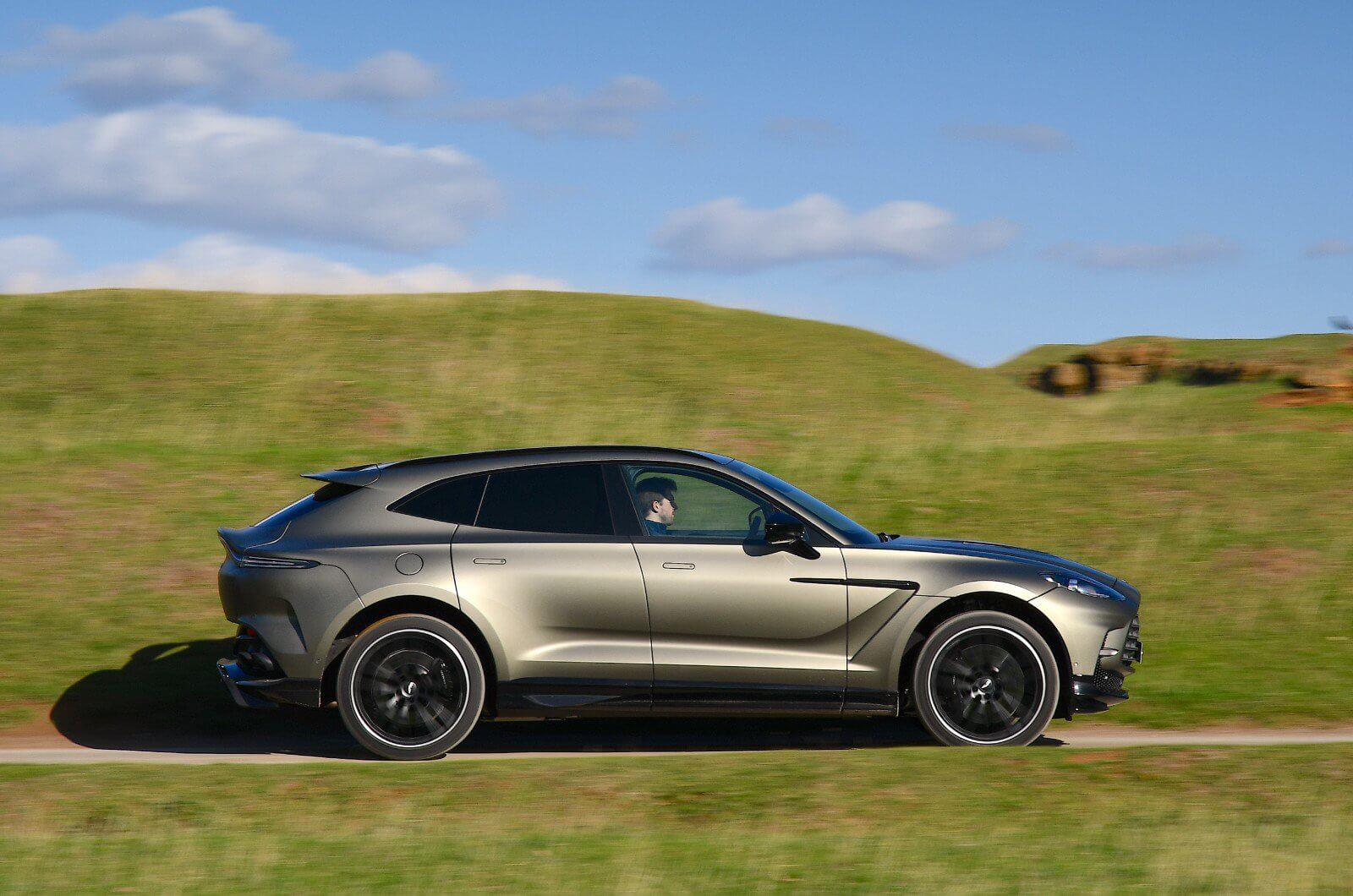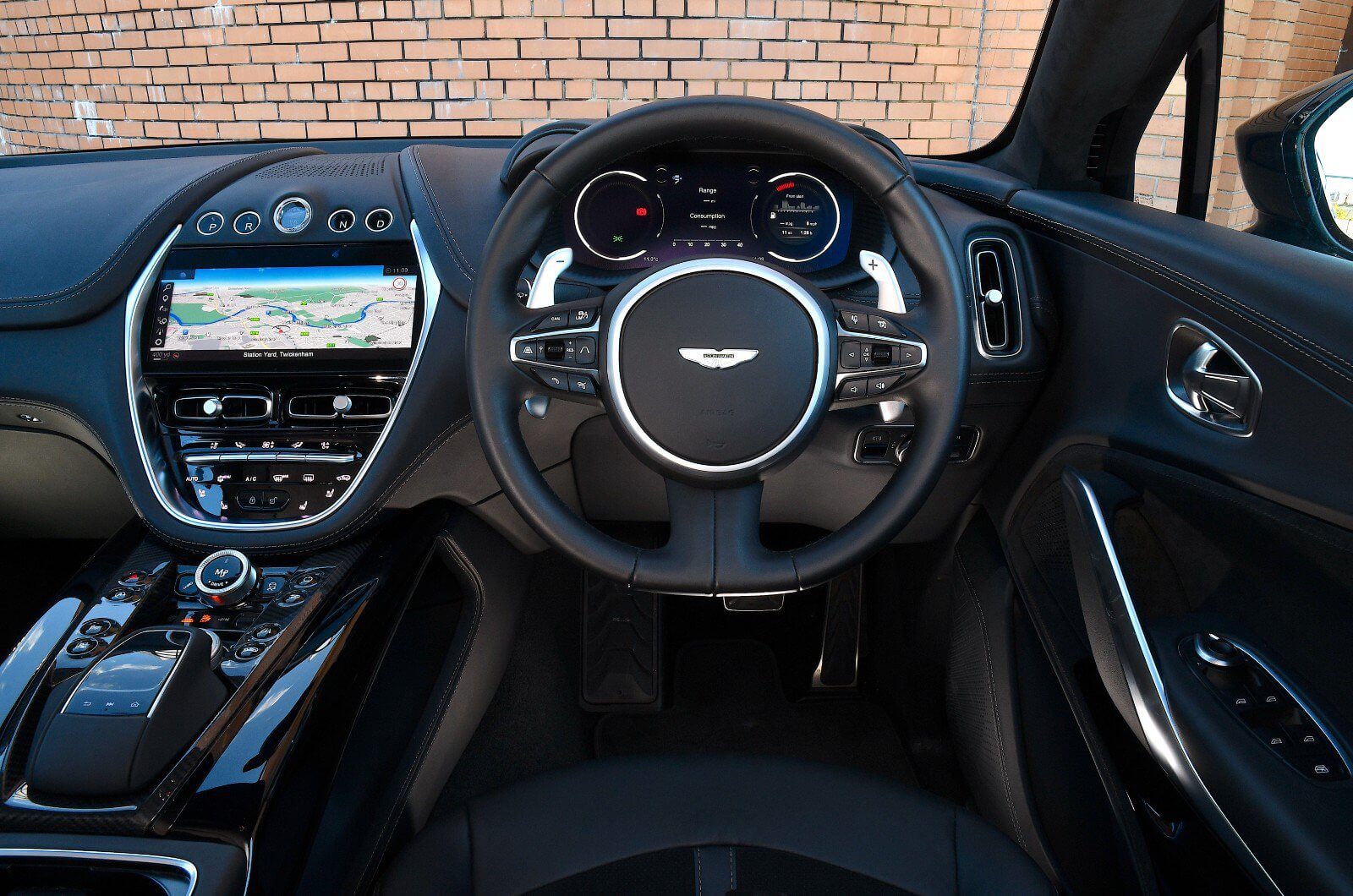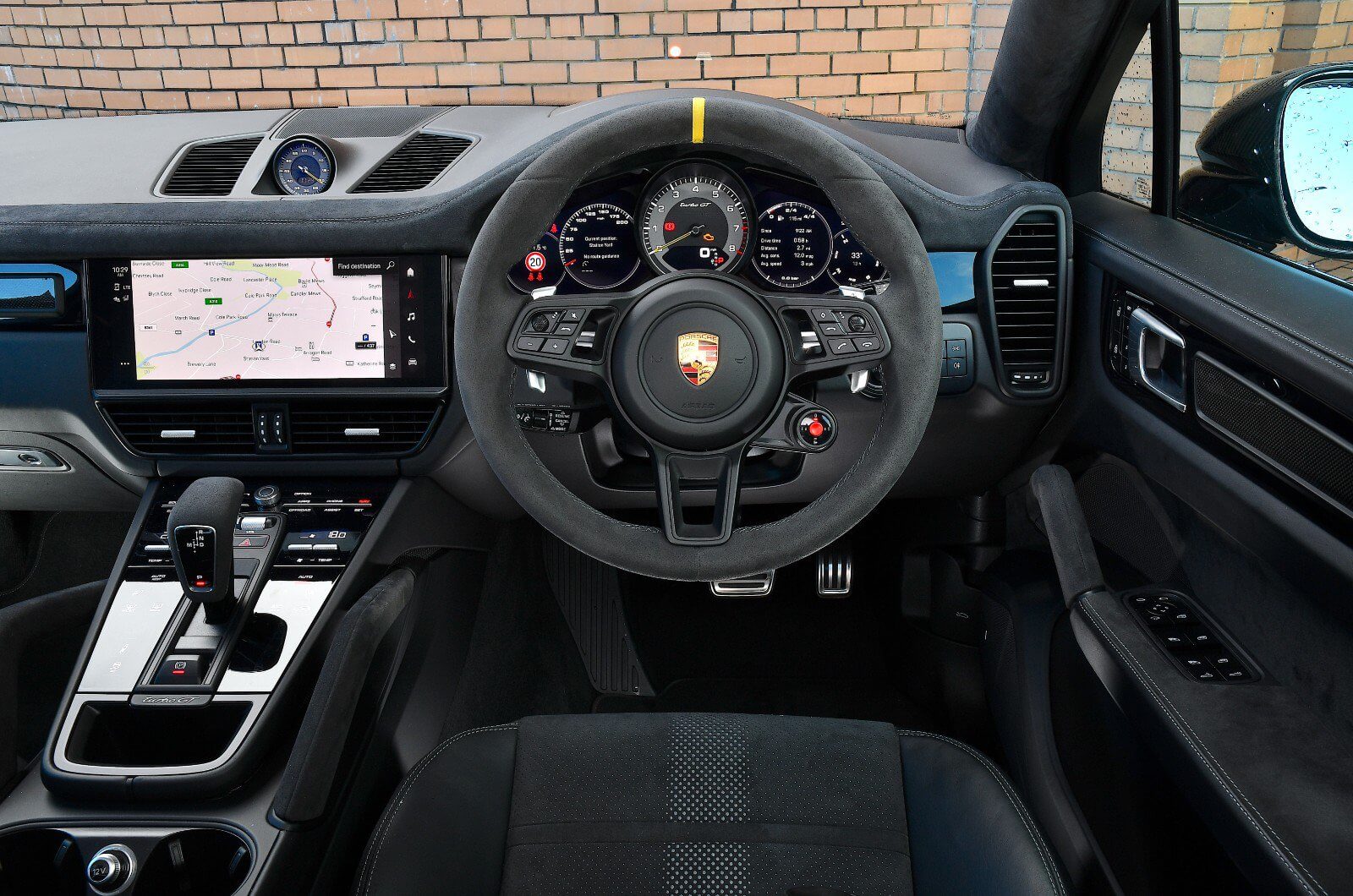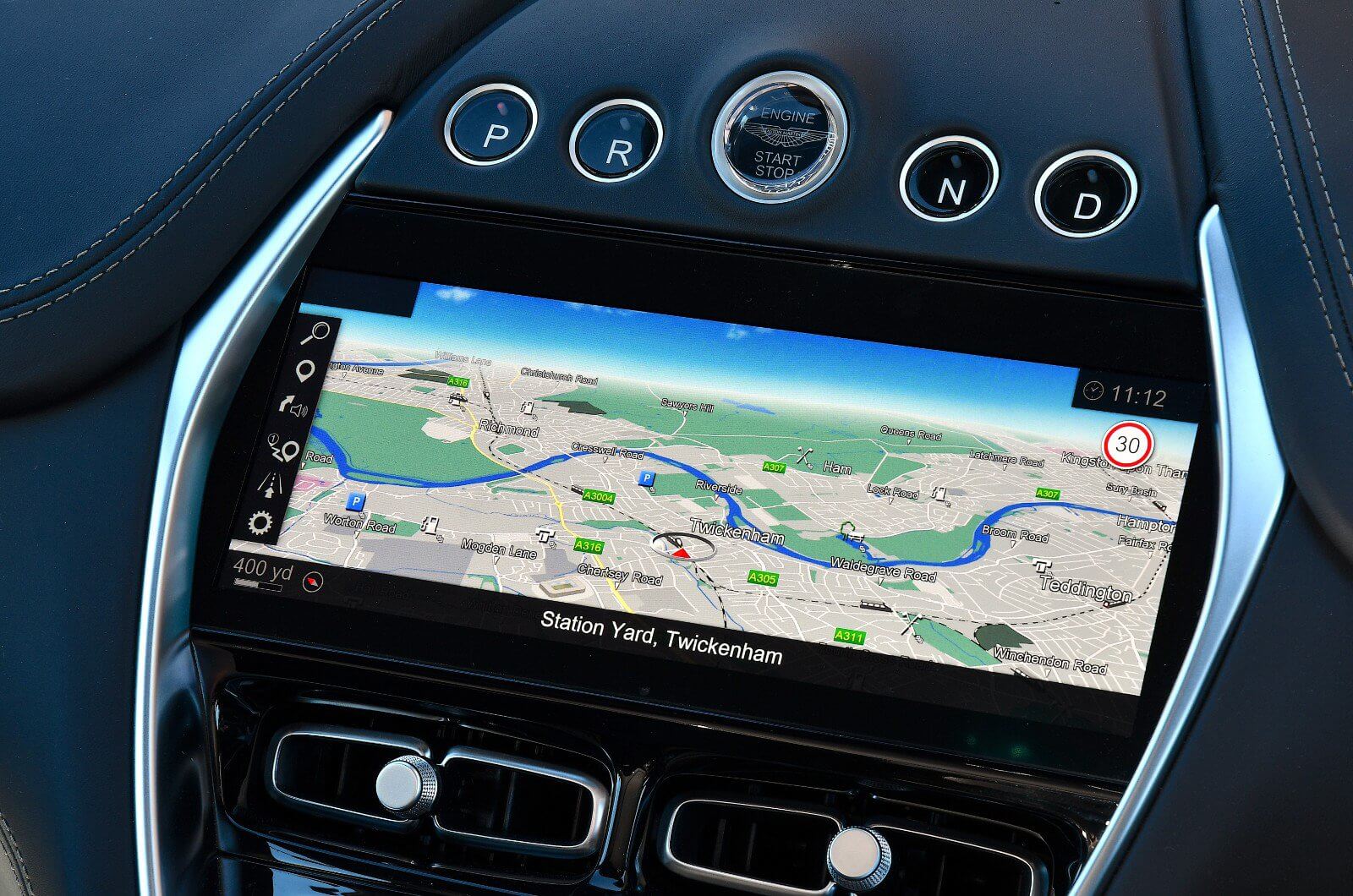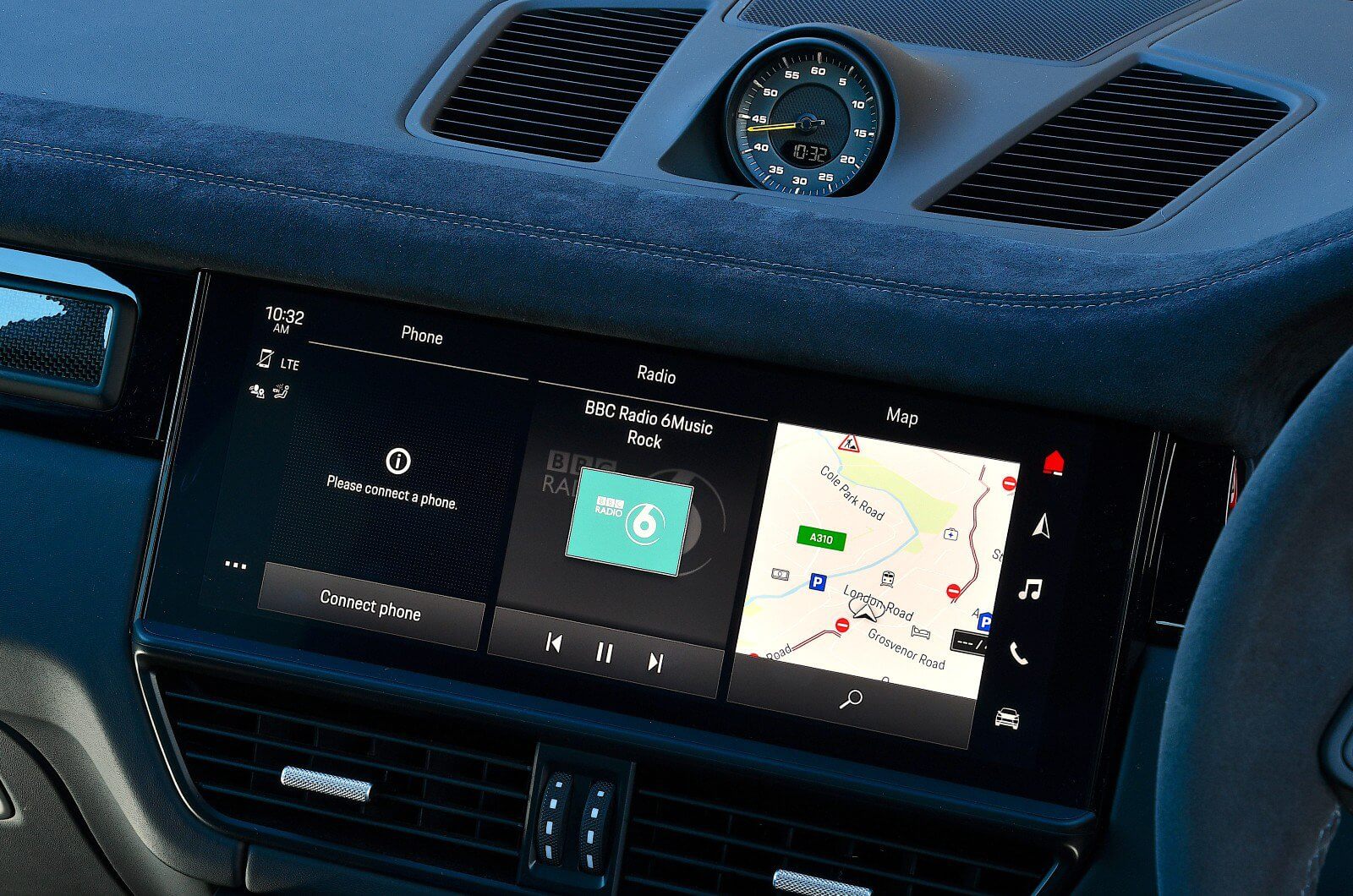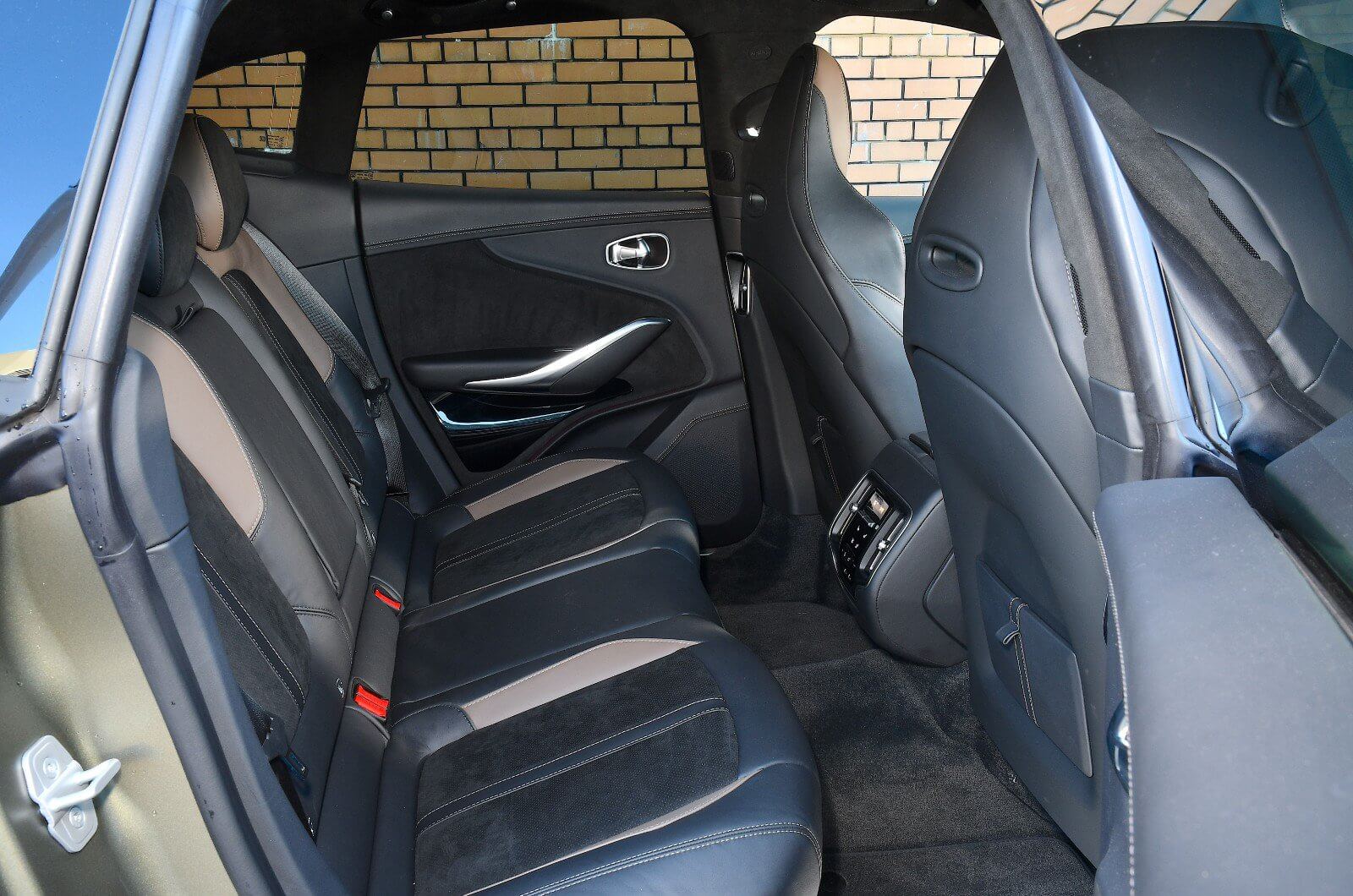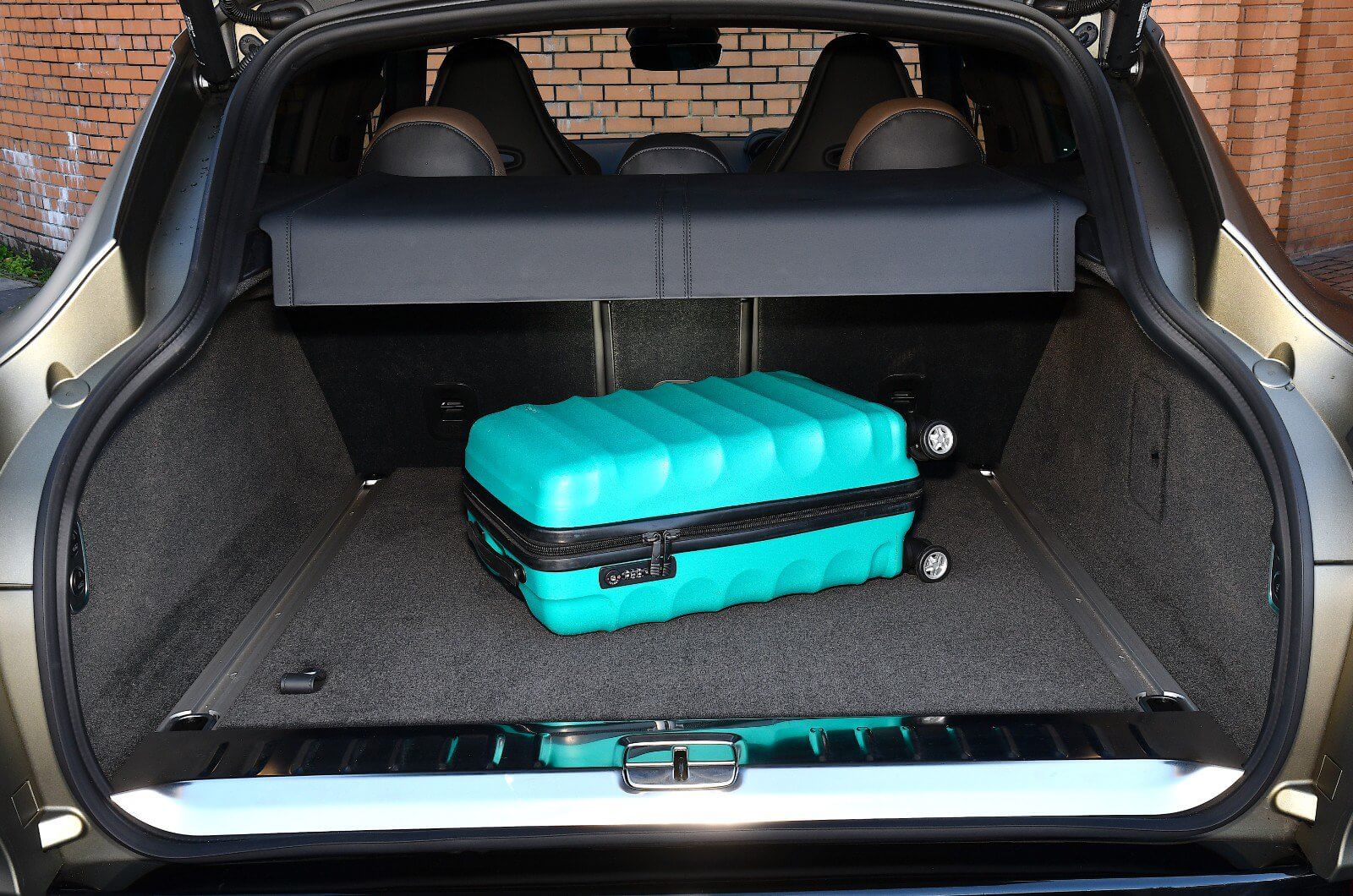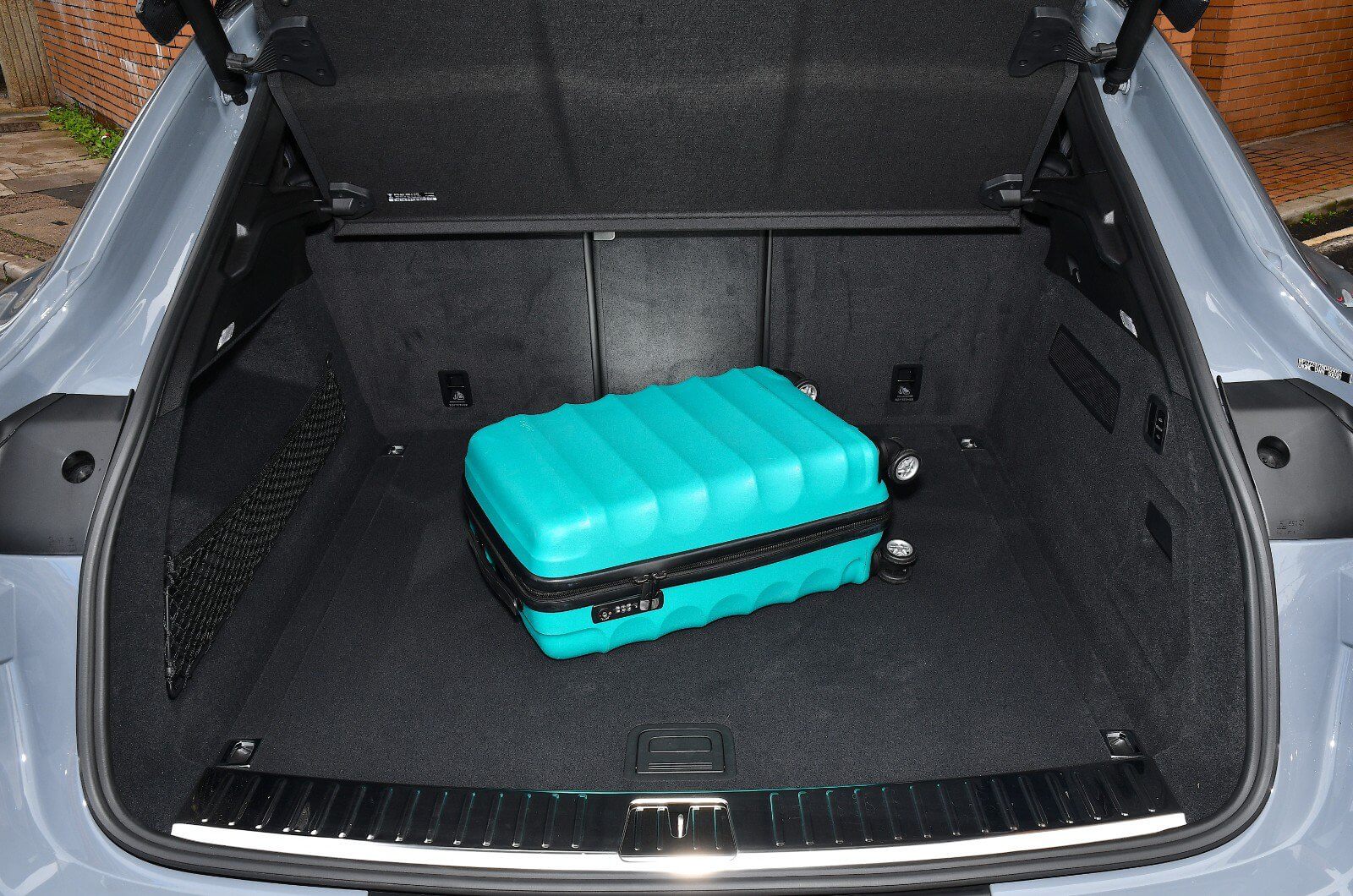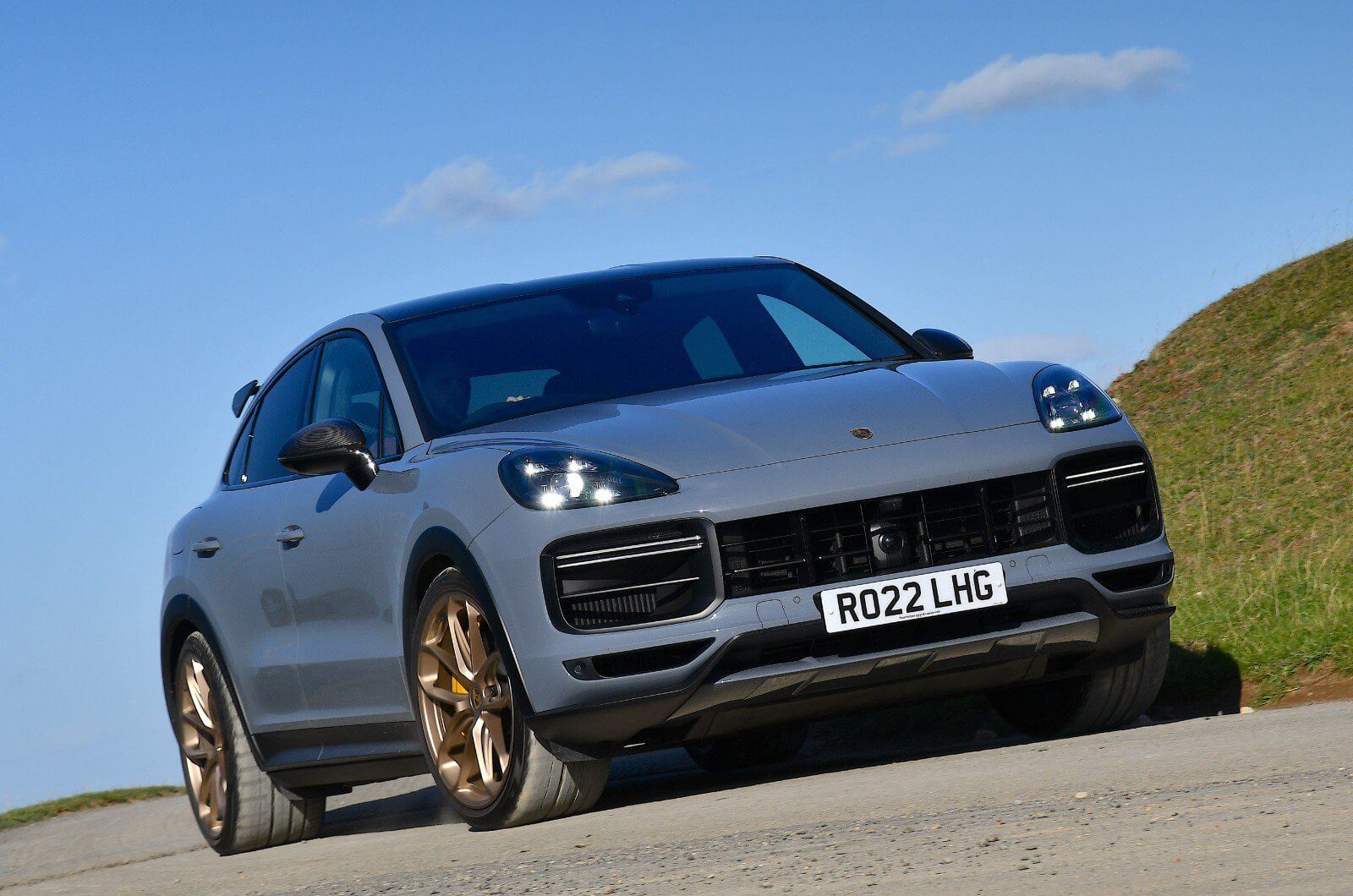These two musclebound monsters sit at the very top of the sports SUV tree, but which is the king of the road?
The super-SUV is such a new phenomenon that it has yet to be defined. If we were asked to outline the startlingly broad remit of the SSUV, we’d argue that it has to deliver supercar-rivalling straight-line performance, unrestrained luxury, superb handling abilities and a good helping of practicality to justify its bulky SUV frame.
In other words, one vehicle to do it all. This brings us to the Aston Martin DBX 707, the most powerful SUV ever produced. Yes, really; compared with the ‘regular’ DBX on which it’s based, the 707’s power climbs from 404kW to 520kW (707PS), thanks to a set of larger turbos and improved cooling for its mighty 4.0-litre V8 engine. To harness all of that extra power, Aston’s range-topper also gets revised suspension, fade-resistant carbon-ceramic brakes, a strengthened rear differential to handle the extra power, and an aerodynamic makeover.
Aston Martin has even hinted that it wants to take the DBX 707 to the Nürburgring Nordschleife race track with the aim of demolishing the current 7min 38sec SUV lap record. A record that happens to be held by our second contender: the mighty Porsche Cayenne Turbo GT.
As you might have gathered from its brisk ‘Ring lap, the Turbo GT is about more than just straight line-speed, although, with its 4.0-litre V8 producing 471kW, it’s certainly not short on poke. What’s more, the Cayenne Coupe’s underpinnings have been thoroughly re-engineered in the name of better handling for the GT; we’re talking fettled rear-wheel steering, stiffer air suspension, a more aggressive torque vectoring system to help the car turn in to corners quicker, and specially developed Pirelli P Zero Corsa tyres. It even has a lightweight carbonfibre roof.
The result is comfortably the fastest and most expensive Cayenne yet. So, should Aston Martin be worried?
Performance, ride, handling, refinement
Imagine, for a moment, that you’re sitting on the deck of your yacht as it leaves port. But instead of it accelerating nice and steadily out to sea, it lifts its bow and powers towards the horizon with the pace of a jet ski, just as you’re taking a sip of your Negroni. That hopefully goes some way to describing what it’s like to deploy launch control in both the DBX and Cayenne; against the stopwatch, we timed both of these heavyweights from 0-100km/h in just 3.3sec.
For context, that’s more than half a second quicker than the Aston Martin DB11 V12 coupe we tested some years ago. And yes, you might rightly argue that that car doesn’t have the benefit of four-wheel drive to help with traction off the line, but the fact is these SUVs would leave it struggling in their wake even when it’s up and running.
Dive even deeper into the numbers and you’ll find that beyond 100km/h, the DBX just has the edge over the less powerful Cayenne, but the gap is virtually undetectable from behind the wheel. The most obvious difference between the two cars is the noise they make. With its guttural, race car-aping engine note, even small bursts of acceleration in the DBX is truly theatrical, while the titanium exhaust on the Cayenne emits a more subdued bellow.
But don’t go thinking the Cayenne isn’t exciting, because the way it decimates a tricky series of corners is simply mind-bending. Thanks to steering that’s beautifully weighted and brakes that are as precise as they are strong, you can carry an incredible amount of speed into corners. And as the forces build, the car just grips harder, thanks in part to active anti-roll bars that ensure body lean is almost non-existent. It’s all very un-SUV-like. As is the four-wheel drive system’s predilection to send as much power to the rear wheels as possible on the exit of a corner, allowing you to play with the balance of the car at will.
The DBX isn’t quite as nimble, but we’re still talking pretty small margins here. And while it was a few tenths slower around our private handling circuit than the Cayenne, on a bumpy B-road it doesn’t have as much of a tendency to rock your head from side to side, or for its wide tyres to cause the steering wheel to writhe over ruts in the road. In fact, the DBX’s steering is wonderfully communicative, allowing you to place this two-metre-wide behemoth with real precision; it seems to shrink around you. Its blend of comfort and control is simply better than the somewhat uncompromising Cayenne.
Aston Martin has also put a lot of work into taming the regular DBX’s frenetic low-speed ride by tweaking the 707’s suspension, and it has worked. It does a better job of rounding off raised manhole covers around town than the Cayenne and is impressively cosseting on the motorway. And while both cars drum up a bit of road noise at high speeds due to the huge amount of rubber in contact with the road, neither will leave you worn out after a day at the wheel.
Driving position, visibility, build quality
Both cars have fundamentally sound driving positions, with pedals that line up neatly with the steering wheel, but keen drivers might prefer the fact that you sit a little lower behind the wheel of the Porsche Cayenne. Combine that with a driver’s seat that offers slightly more side support than the wider seats in the Aston Martin DBX and the Cayenne feels more like a traditional performance car.
The Cayenne’s interior also looks that bit sportier, with its grab handles between the front seats, copious use of synthetic suede and grey decorative carbonfibre trim. The Cayenne feels rather more sombre than the DBX, though; the more diverse palette of materials the latter has as standard – including multiple shades of leather and a variety of aluminium and carbonfibre inlays – bring the theatre you might expect when you’re buying a car for the price of a Mediterranean villa.
We’re also pleased that switches still control the most important features in the DBX. Buttons direct the transmission (an established Aston feature), there’s a dial on the centre console for swapping between driving modes, and buttons near your left leg allow you to adjust the suspension, activate the sports exhaust or cancel the lane-keeping assistance. In the Cayenne (aside from the drive select dial on the steering wheel), these functions are all performed via touch-sensitive controls that are trickier to use on the move.
In terms of visibility, both cars are blighted by thick rear pillars and narrow side windows, making them tricky to see out of while parking. Mercifully, both get front and rear parking sensors and a rear-view camera, but the DBX offers an extra helping hand courtesy of a 360-degree camera.
Infotainment systems
Aston Martin DBX 707
The DBX’s infotainment system is Mercedes-sourced, albeit from the previous decade. As a result, the system is sluggish at times, the screen is far from high-definition and it lacks modern features, such as Android Auto smartphone mirroring, although Apple CarPlay is included. It’s a disappointing system for such an expensive car, but it’s not all bad news; it’s operated via a rotary controller, which is less distracting on the move than most touchscreens.
Porsche Cayenne Turbo GT
Porsche’s 12.3-inch display is bright, crisp and quick to respond to inputs. By touchscreen standards, it’s also fairly easy to use, but the fact you have to study it to make sure you’re pressing the correct button makes it more distracting to use than the DBX’s system. The 14-speaker Bose sound system is decent, but audiophiles will prefer the 21-speaker, 1455-watt, Burmester system; DBX owners have to make do with a 14-speaker system putting out 800 watts.
Space and practicality
The fact is, you’ll fit with room to spare in either, even if you’re really tall or really broad.
Nor will a pair of tall adults have any issues in the back; both cars provide enough head and leg room for six-footers to stretch out on a longer journey. However, should you want to carry three passengers in the rear, the Aston Martin DBX is your only option; in the Porsche Cayenne, the middle seat has been removed to save weight. Instead, all you get is a small recessed plastic tray in which to pop your phone and perhaps some snacks.
The DBX extends its lead in the practicality stakes with a boot that is fractionally longer and wider than the Cayenne’s. So, while both car can swallow eight carry-on suitcases, the DBX has room left over for a few bits of soft hand luggage. Aston Martin also offers a range of boot packages, such as the Pet Package (which includes a portable washer for cleaning muddy dogs) and the Snow Package, which gives you boot warmers to make winter holidays more palatable.
Both cars offer 40/20/40 split-folding rear seatbacks, but only the DBX allows you to drop them remotely via a button in the boot. Also, when they’re folded, the DBX leaves you with an almost flat extended load bay right up to the front seats, whereas there’s a slight incline in the Cayenne’s floor.
Boot space
Aston Martin DBX 707
Boot size 638-1530 litres
Suitcases 8
Porsche Cayenne Turbo GT
Boot size 549-1464 litres
Suitcases 8
Verdict
The Cayenne Turbo GT sets a new benchmark for handling among SUVs. Its grip, balance and poise have to be experienced to be believed and could give unsuspecting supercar drivers a fright on track days. It’s also outrageously fast in a straight line, reasonably practical and, in this company, quite reasonably priced.
However, those looking for the ultimate super-SUV experience should plump for the DBX 707. Not only does its bombastic engine note add an extra dimension of theatre to its face-melting acceleration, but it’s also comfier, quieter, more spacious, better equipped and more interesting inside. We’d go so far as to say it’s the best Aston Martin we’ve ever driven.
1st – New Aston Martin DBX 707
For Amazing acceleration; vivid soundtrack; playful handling; spacious interior
Against Eye-watering price; poor infotainment; not quite as agile; front seats could hug you more
2nd – Porsche Cayenne Turbo GT
For Physics-defying body control; unbelievable brakes; cheaper to buy; impressive build quality
Against Occasionally lumpy ride; quicker depreciation; essential safety kit costs extra
Recommended options Adaptive cruise control (£1203), keyless entry (£816), wireless phone charger (£413)




